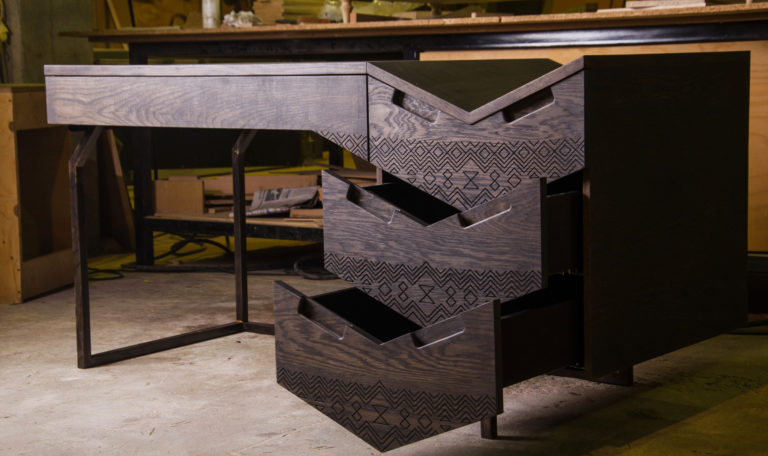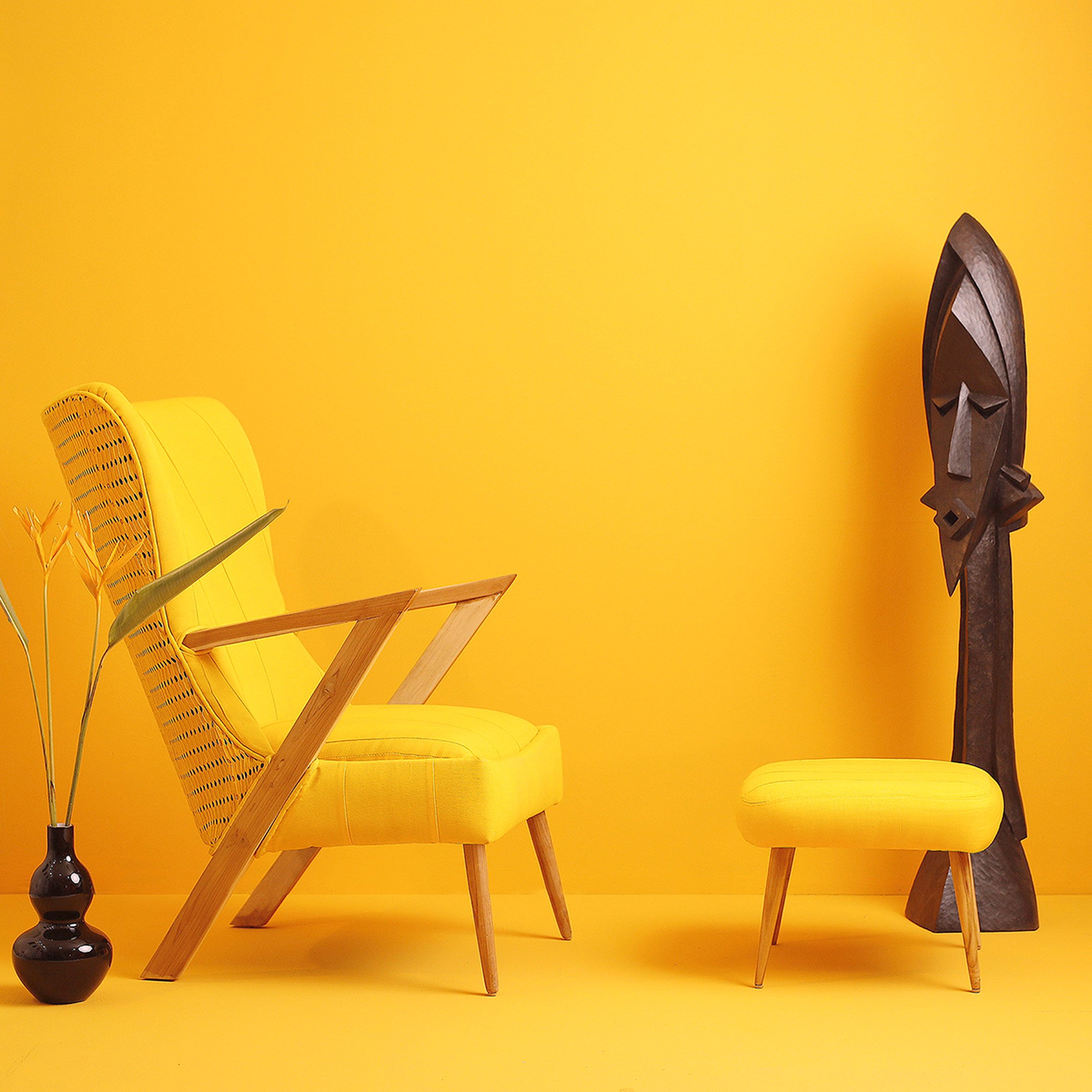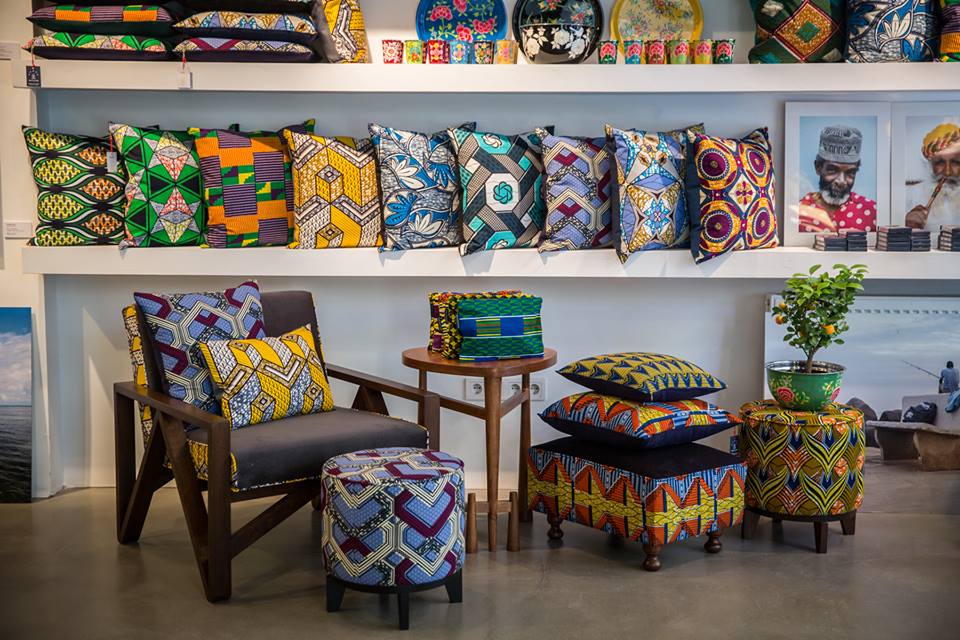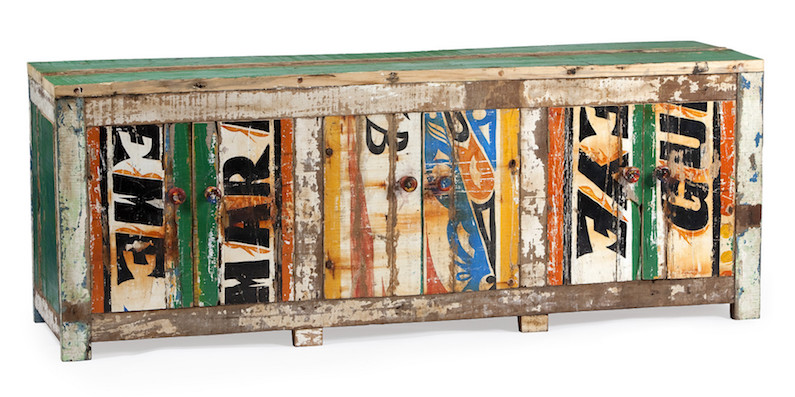African Furniture: A Celebration of Culture and Craftsmanship

African furniture is not just a piece of decor; it is a celebration of the rich culture and craftsmanship that Africa has to offer. From hand-carved wooden chairs to intricately designed textiles, African furniture represents the spirit and heritage of the continent.
A brief overview of African furniture and its significance in celebrating African culture and craftsmanship
African furniture is known for its unique style, vibrant colors, and intricate details. Each piece tells a story and reflects the cultural heritage of the region it comes from. Whether it is the symbolic patterns on a kente cloth chair or the organic shapes of a carved wooden table, every element of African furniture represents the creativity and skill of African artisans.
Beyond its aesthetic appeal, African furniture serves as a reminder of the values and traditions that are deeply rooted in African culture. It is a way to showcase the talent and craftsmanship of local artisans who have honed their skills through generations.
Moreover, African furniture celebrates sustainability and eco-friendliness. Many African artisans use locally sourced materials and employ traditional techniques to create their masterpieces. By choosing African furniture, you are not only supporting local craftsmen but also promoting sustainable practices.
In conclusion, African furniture is much more than just functional pieces for your home or office. It is a testament to the rich cultural heritage of Africa and the incredible craftsmanship that has been passed down through generations. By incorporating African furniture into your space, you are creating an environment that celebrates diversity, creativity, and the beauty of African culture.

Traditional African Furniture
African furniture stands as a testament to the rich cultural heritage and superior craftsmanship of the continent. From intricately carved wooden chairs to vibrant and unique textiles, each piece tells a story and pays homage to the traditions that have been passed down through generations.
Exploring the characteristics and styles of traditional African furniture
- Authenticity: Traditional African furniture is characterized by its authenticity. Crafted using locally sourced materials, such as wood, bamboo, and natural fibers, these pieces reflect the natural beauty of Africa's landscapes and ecosystems.
- Spiritual Significance: Many African tribes imbue their furniture with spiritual significance. Designs often feature symbols and motifs that hold cultural or religious meanings, further deepening the connection between the piece and its origins.
- Intricate Detailing: African furniture is known for its intricate and detailed craftsmanship. From hand-carved patterns to delicate weavings, every element of these pieces demonstrates the skill and precision of the artisans who create them.
- Symbolism: Traditional African furniture often incorporates symbolism into its design. For example, animal motifs may represent strength or wisdom, while geometric patterns may symbolize unity or balance. These symbolic elements add depth and meaning to each piece.
- Vibrant Colors: African furniture embraces vibrant colors and patterns, reflecting the vibrant spirit of the continent. These bold hues not only add aesthetic appeal but also serve as a way to express cultural identity and celebrate diversity.
By incorporating traditional African furniture into your home or office, you not only showcase your appreciation for artistry and craftsmanship but also embrace the culture and history it represents. Each piece tells a unique story and serves as a reminder of Africa's rich heritage.
African Creative is your destination for authentic African design, art, décor, and jewelry. We curate aesthetics that speak to the bold spirit of Africa and specialize in handcrafted African and African-inspired pieces.
Sign up for the African Creative newsletter to stay updated on our latest collections and promotions.
Contemporary African Furniture Designers

When it comes to furniture design, Africa may not be the first place that comes to mind. However, the continent is home to a wealth of talented designers who are creating beautiful and innovative pieces that celebrate African culture and craftsmanship.
Highlighting the work of contemporary African furniture designers and their innovative creations
In recent years, there has been a growing interest in African design and a desire to incorporate elements of African culture into interior spaces. This has led to an increase in demand for contemporary African furniture that showcases the unique style and craftsmanship of the continent.
One such designer is Xola Mesho, whose furniture combines traditional African techniques with modern aesthetics. His pieces are made using sustainable materials and feature intricate patterns and vibrant colors that reflect the rich heritage of Africa.
Another notable designer is Ifeanyi Oganwu, whose work merges African influences with contemporary design principles. Oganwu's furniture often incorporates traditional African motifs and materials, such as hand-carved wood or woven textiles, resulting in stunning and unique pieces that tell a story.
By showcasing the work of these talented designers, the world is starting to recognize the immense talent and creativity that Africa has to offer in the realm of furniture design. These designers are not only creating beautiful pieces, but they are also preserving traditional craftsmanship techniques and promoting sustainable practices.
In conclusion, contemporary African furniture designers are taking center stage in the design world by creating innovative pieces that celebrate Africa's rich culture and heritage. Their work showcases the beauty of African craftsmanship while incorporating modern design elements. It's an exciting time for African design, and these designers are leading the way in creating stunning furniture that tells a story.
Materials Used in African Furniture

African furniture is not just a functional piece in a home; it is a celebration of culture and craftsmanship. The materials used in African furniture reflect the rich diversity and history of the continent. From wood to natural fibers, African artisans create exquisite pieces that showcase their skills and pay homage to traditional craftsmanship.
One of the most prevalent materials used in African furniture is wood. Different types of hardwood, such as mahogany and ebony, are sourced locally and transformed into stunning pieces. These woods are known for their durability and unique grain patterns, adding beauty and character to the furniture.
In addition to wood, African furniture also incorporates natural fibers like rattan, bamboo, and sisal. These fibers are woven into intricate patterns to create chairs, baskets, and other decorative elements. The use of natural fibers not only enhances the aesthetics of the furniture but also makes it eco-friendly and sustainable.
Another notable material used in African furniture is leather. African artisans skillfully work with leather to create luxurious seating options like armchairs and sofas. The leather is often sourced from local livestock, ensuring that every piece has an authentic touch.
By examining the diverse range of materials used in African furniture, it becomes clear that each piece tells a story. The craftsmanship and attention to detail exhibited by African artisans reflect the culture and heritage of their communities. African furniture is not just a way to decorate a space; it is a means to celebrate centuries-old traditions and showcase the beauty of Africa's craftsmanship.
At African Creative, we are passionate about promoting authentic African design. Our curated collection features handcrafted furniture that embodies the spirit of Africa. Experience the beauty and craftsmanship of African furniture by browsing our selection today.
Symbolism in African Furniture

African furniture is not just functional pieces of art. It is a celebration of culture and craftsmanship that reflects the rich heritage and traditions of the African continent. Each piece tells a unique story and holds deep meaning, making it more than just furniture.
Exploring the symbolism and cultural significance behind certain designs and motifs in African furniture
The designs and motifs found in African furniture are brimming with symbolism and cultural significance. For example, the use of animal prints, such as zebra or leopard, represents strength and power. These prints have been used for centuries to convey a sense of authority and prestige.
Another common motif in African furniture is the use of tribal patterns. These intricate designs often depict stories from folklore or represent historical events. They serve as a way to connect with the past and preserve traditional beliefs and wisdom.
One cannot talk about African furniture without mentioning the use of wood. Wood has been a primary material in African craftsmanship for generations. Its natural beauty and durability make it the perfect choice for creating timeless pieces that blend seamlessly with any interior style.
Moreover, African furniture is often handcrafted by skilled artisans using traditional techniques passed down through generations. This not only ensures the highest quality but also helps support local communities by providing employment opportunities and preserving ancient craftsmanship skills.
African furniture is more than just a piece of decor; it is a testament to the rich cultural heritage of Africa. By bringing these unique pieces into your home, you are not only embracing diversity but also supporting the continuation of traditional craftsmanship. So why not add a touch of Africa to your space and let its vibrant history shine through?
Techniques and Craftsmanship
When it comes to African furniture, there is an undeniable celebration of culture and craftsmanship. Each piece tells a unique story, representing the rich heritage and traditions of the African continent. From the intricately carved patterns to the vibrant colors used, African furniture is a true work of art.
Delving into the intricate techniques and craftsmanship involved in creating African furniture
- Handcrafted Excellence: African furniture is meticulously handcrafted by skilled artisans who have honed their craft for generations. They use traditional techniques passed down through families, ensuring the highest level of quality and authenticity.
- Natural Materials: The use of natural materials is a defining feature of African furniture. From sustainably sourced wood to natural fibers such as rattan and sisal, these materials are carefully selected to create durable and environmentally friendly pieces.
- Incorporating Symbolism: African furniture often incorporates symbols that hold significant meaning within the culture. These symbols can represent various aspects such as fertility, protection, or unity, adding depth and storytelling to the pieces.
- Vibrant Colors: African furniture embraces bold and vibrant colors that reflect the vibrancy of African culture. From earthy tones to vibrant reds, blues, and yellows, these colors add a sense of energy and life to any space.
- Mix of Tradition and Modernity: While African furniture celebrates tradition, it also embraces modern influences. Contemporary design elements are often incorporated alongside traditional techniques, resulting in unique and eclectic pieces that blend old and new.
African furniture is not just functional; it is an expression of artistry steeped in history and culture. By incorporating these pieces into your space, you not only bring beauty but also pay homage to the talented craftsmen who create them. It is a celebration of culture and a way to connect with the soul of Africa.
African Furniture in Interior Design
African furniture has long been celebrated for its unique blend of culture and craftsmanship. The rich history and diverse traditions of Africa are beautifully reflected in the design elements of its furniture. From intricate carvings to vibrant patterns, African furniture adds a touch of authenticity and warmth to any space.
Inspiring ideas on how to incorporate African furniture into modern interior design
- Accent Pieces: African furniture can make a powerful statement when used as accent pieces. Consider adding a beautifully carved wooden table or a handwoven African basket as a centerpiece in your living room. These items not only serve a functional purpose but also become conversation starters and create a focal point in the room.
- Mix and Match: Don't be afraid to mix African furniture with modern or minimalist pieces. The contrast between traditional African designs and contemporary aesthetics can create a visually stunning look. For example, pairing a sleek leather sofa with a vibrant African-printed throw pillow can add an unexpected pop of color and texture to your space.
- Wall Art: Add depth and interest to your walls by displaying African-inspired artwork or handcrafted masks. These unique pieces can add an exotic touch to your interiors while also honoring the artistic traditions and storytelling of Africa.
- Natural Elements: Embrace the raw beauty of natural materials by incorporating African furniture made from sustainable resources such as bamboo, rattan, or reclaimed wood. These earthy textures not only add warmth but also evoke a sense of harmony with nature.
By incorporating African furniture into your interior design, you are not only embracing the beauty of traditional craftsmanship but also celebrating the rich cultural heritage that Africa has to offer. So go ahead, explore the world of African furniture, and bring a touch of Africa into your home.
Sustainable Practices in African Furniture Production
When it comes to African furniture, not only are you getting a unique and beautiful piece, but you are also supporting sustainable practices and eco-friendly initiatives. These practices are vital in preserving the rich culture and craftsmanship that Africa has to offer.
Discussing the importance of sustainable practices and eco-friendly initiatives in African furniture production
African furniture producers have embraced sustainable practices to ensure the longevity of their craft and the preservation of the environment. By using locally sourced materials, they reduce carbon emissions associated with transportation and support local communities.
Additionally, African furniture makers prioritize eco-friendly initiatives such as using low VOC (volatile organic compounds) finishes and opting for non-toxic natural dyes. This not only benefits the environment but also ensures that your furniture is safe for you and your family.
By investing in African furniture, you are not only making a statement with a unique and stylish piece but also supporting responsible production practices. Sustainability is at the heart of African culture, and these artisans take pride in their crafting methods that respect nature and promote ethical sourcing.
Moreover, purchasing African furniture helps sustain local economies. It enables talented craftsmen to continue their traditional practices while providing them with fair wages and opportunities for economic growth.
In conclusion, African furniture is a celebration of culture and craftsmanship that goes hand-in-hand with sustainable practices. By choosing these unique pieces, you contribute to the preservation of Africa's rich heritage while making a positive impact on the environment.
Conclusion
African furniture is a true celebration of African culture and craftsmanship. From intricately designed carvings to the use of vibrant colors and natural materials, each piece tells a story. The rich heritage and artistic value of African furniture cannot be understated.
Summarizing the rich heritage and artistic value of African furniture in celebrating African culture and craftsmanship
- Cultural Significance: African furniture reflects the diverse cultures and traditions of the continent. Each piece carries symbols, patterns, and motifs that represent different tribes and their beliefs. By incorporating these elements into their homes, people can connect with their roots and pay homage to their heritage.
- Craftsmanship: The craftsmanship behind African furniture is exceptional. Skilled artisans spend countless hours hand-carving, sculpting, and weaving each piece. Their attention to detail and commitment to preserving traditional techniques ensure that every item is a work of art.
- Unique Design: African furniture stands out for its unique design aesthetic. The use of bold colors, geometric patterns, and organic shapes creates a visually striking appearance. Whether it's a wooden chair adorned with intricate carvings or a vibrant textile used as upholstery, African furniture adds an element of charm and character to any space.
- Sustainable Materials: African furniture often utilizes sustainable materials sourced from nature, such as wood, bamboo, rattan, and mudcloth. This eco-friendly approach not only preserves the environment but also supports local communities who rely on these resources for their livelihoods.
In conclusion, African furniture is not just ordinary decor; it is a statement piece that celebrates the rich heritage and artistic traditions of Africa. It adds a touch of culture, authenticity, and craftsmanship to any space lucky enough to showcase it.



